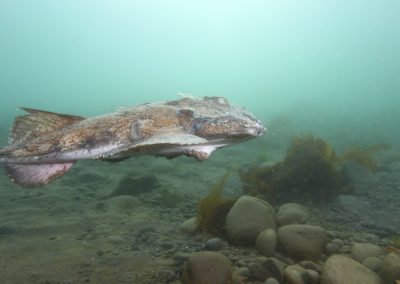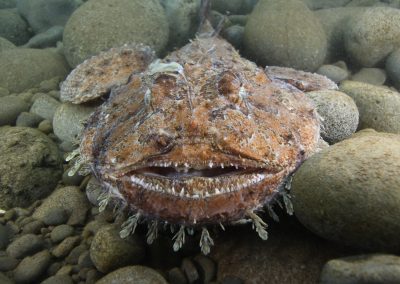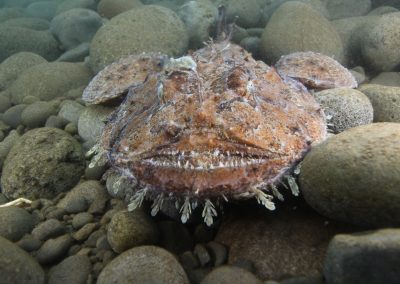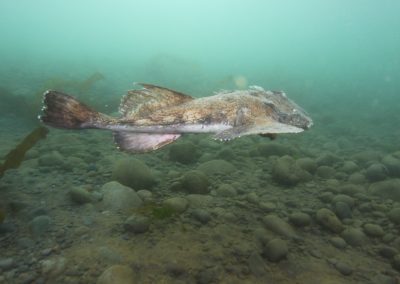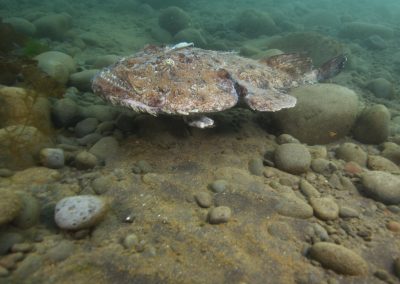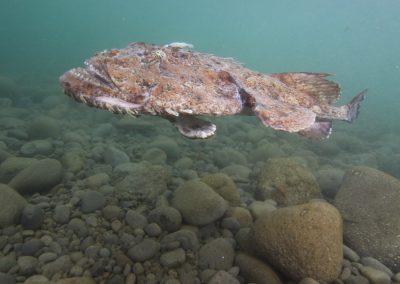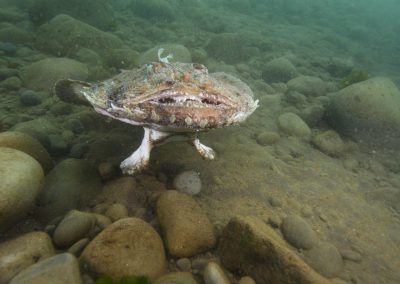Monkfish
Lophius piscatorius
The monkfish (or angler) has a large head and a very large mouth with sharp teeth. Many people claim that it is among the ugliest fish in the ocean. However, despite its looks it is one of the most valuable fish in the sea per weight.
Distribution
The monkfish occurs at a very wide depth range, from shallow waters down to a depth of 1 800 m. It is usually associated with the bottom, but also occurs close to the surface where it has been seen eating seabirds. It occurs all along the coast off Europe, from Murmansk down to the Mediterranean Sea, and can even be found down the coast of Africa to the Bay of Guinea. Several related species of the genus Lophius exist along the entire Atlantic Ocean.
Ecology
It spawns in deep waters. The eggs and larvae then drift to shallower waters, settling on the bottom when 5 to 9 cm long. It grows to 15 to 20 cm in length the first year. The monk grows rapidly during its first years of life and reaches sexual maturity at the age of 4 to 6 and 40 to 80 cm in length, males younger and smaller. The largest monkfish caught in Icelandic waters was 155 cm long and 35 kg gutted.
As the sharp teeth imply, the monk is a predatory fish, mainly eating other fishes. It lies on the bottom hiding from its prey, which, when close enough, is swiftly engulfed whole by the enormous mouth.
Formerly the monk could only be found in the warmer waters south of Iceland. Due to a recent warming trend in Icelandic waters, however, the distribution has expanded to the waters west of Iceland. It even occurs now off the north coast.
Fisheries
Monkfish catches in Icelandic waters were rather stable at around 500 tonnes per year from 1965 until 1997. These were mostly bycatch in other fisheries, especially lobster fisheries. Then catches increased rapidly to almost 4000 tonnes. This was because the stock grew quite large and therefore bycatch was higher and direct fisheries also evolved using special gillnets. Most of the direct fisheries were in the autumn until mid-winter, when the bulk of the stock migrates to deeper waters to spawn. The stock has declined again.
HÞV

